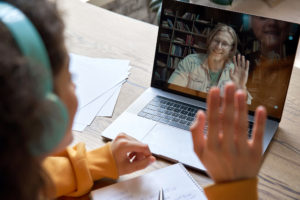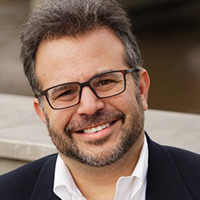We thought spring of 2020 was going to be our return to normalcy.
We spent the fall and winter of the 2019–20 school year in complete crisis. Our school was supposed to be moving into a renovated co-located school building in fall of 2019, and when that project went into turmoil, so did our school. We spent 19 days in a construction site, then a month using the district office conference center as “drop-in” school while our classes moved online, until finally settling into the district conference center as our pop-up school for several months before finally returning to our building over President’s Day for what we thought was going to be our exciting return to a now-renovated school building.
We were there for 19 days before the pandemic shut down in-person schooling nationwide.
So for us, it will be two full years of “not normal” school before we finally are able to (hopefully) be back in the school building with the kids full time in the fall. We won’t be the same school we were when we come back, but hopefully, we will come back more committed to the ideals that powered our school before these crises began.
How is that possible? What did we learn?
Your Schedule Reflects Your Values
With each crisis, we asked ourselves, “How do we make sure the things that we value the most about our school are made manifest in the time we have?” One thing that we have always said about the Science Leadership Academy (SLA) is that we teach students before we teach our subjects (learn more during our NASSP Virtual Tour). We knew that virtual school was going to be really hard for kids to stay connected to the community, so we leaned into our advisory model to make sure that every student had a deep connection with at least one adult in the building. When we built the virtual schedule, we made sure that advisers had time to schedule one-on-one meetings with every advisee every week.

That has been instrumental in keeping our students engaged and supported throughout the pandemic. It’s been during those 1:1 sessions that we have learned about students who have lost family members to COVID-19, were struggling with economic instability, or were dealing with increased anxiety or depression. Maybe some of those students would have told us without those 1:1 sessions, but by creating the time where every student could be seen and heard, we made sure that every student knows we care and are there to listen to them.
Everyone Needs Grace
Everyone. Teachers, students, staff, you. Everyone deserves grace. And they don’t need to ask for it. For us, that’s meant examining our assessment policies and making sure that we weren’t grading the pandemic. So it was an opportunity to look at late work policies. It was an opportunity to look at the way we dealt with missing work. And it was a way to make sure that we created space for kids to get work done during the school day.
For adults, it meant reexamining our professional development (PD) time to ensure that, whenever possible, it was work-product focused. We need to make sure that we’re on top of special education progress monitoring? Great—let’s use some of our PD time. Advisers need time to look through our learning management system to track how their advisees are doing? Great—let’s use some of our PD time. We need to shift calendar due dates for the third quarter so that our major projects don’t have overlapping deadlines? Great—let’s use some of our PD time. And of course, when we see how using collaborative time makes our professional lives better, we can apply those same lessons to how we can use school time to make students’ lives better as well.
What’s important is that these are lessons we will take with us into “normal” school, whenever that restarts. They are lessons that are very much an outgrowth of the model we started with before we hit these crises, and on some level, it’s powerful that the stuff we believed before this all happened turned out to contain the keys to surviving the last two years. It means we can build on the last two years to be an even stronger, more caring, more thoughtful school when we finally get to walk our halls together again.
And, if we can pull that off, we will have honored the incredible hard work and dedication of everyone—students and staff—over these past two years.
This blog is part of NASSP’s Virtual Tour Series. Be sure to visit NASSP’s Facebook page on April 12 at 1:30 p.m. (ET) to participate in the live tour and join Chris at 9:00 p.m. (ET) on April 18 for a Pau Hana, an informal virtual networking session to ask questions and keep the conversation going.


1 Comment
This seems to be a wonderful and exciting plan. I really like how the one on one meeting with students gave students ownership in the culture and underlying principles of the school.